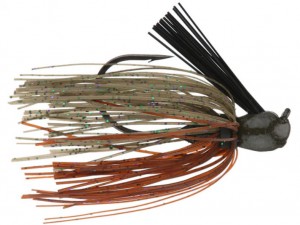
It never fails. Break out the cameras and a cold front will blow through. That’s one of the few guarantees in life.
Naturally, that’s what happened when I fished with Joe Sancho in Central Park in New York. The bite started off really slow. Then it got tough. Nothing we were throwing seemed to interest them. But, we had a show to film so we needed to do something. That something turned out to be soaking a jig.
Here’s the deal: bass are bass regardless of where they live. The ponds in Central Park have some cover just like waters everywhere else. There are bushes that overhang the bank, tree limbs that fall into the water and even big pieces of trash that the bass can hide under.

We decided to target those fish with Ike’s Mini Flipping Jigs. They’re made by Missile Jigs. We used conventional stuff — 3/8-ounce weight in black and blue. We added a small Berkley Powerbait Chigger Craw, one that I cut down, to give the jig a little more bulk and add to its realistic appearance.
You’ll notice that with a lot of the lighter techniques I use I cut down my plastics. That’s so they match the size and weight of my lure. It’s easy to do, especially with creature baits. Just snip off a little of the body and maybe shorten the tentacles or arms. A small pair of scissors will work or, in an emergency, you can use your teeth. Be careful with scented baits, though. They can be really nasty in your mouth. Believe me. I know.
Our decision to use Mini Flipping Jigs was no accident. The skirt on those little critters is made up of very fine, thin strings of material. It’s a true custom, fine cut. That skirt will give the lure a little movement even when everything else is perfectly still. That’s really important as you’ll see in the next couple of paragraphs.

Soaking a jig is sort of like dead sticking except that it’s different. What I mean by that is that you throw the jig out, let it fall to the bottom and then count to 10, slowly. What happens is that the skirt material will continue to move ever so slightly even when the body of the jig is sitting still.
After your 10 count has passed move your rod tip just a little — less than an inch — and repeat the process all over again. If that doesn’t produce a bite, you reel everything in and cast to another part of the cover.
This is different from dead sticking in that you don’t let the lure sit motionless. You take advantage of the slight movement the jig’s skirt gives you. That may seem like nothing to us but it makes the jig look alive to the bass.
They’re predators. Even when they’re not actively feeding they’ll attack something that looks alive but vulnerable.
Don’t be afraid to try soaking a jig this year. It’s a really good technique when things get tough.
















